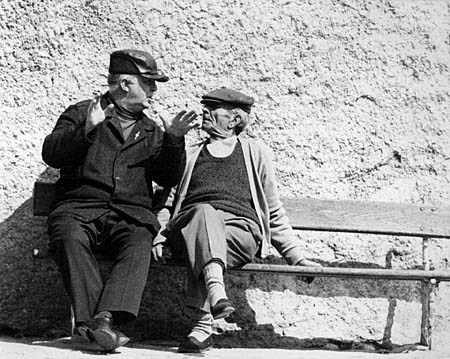
It’s easy to see the difference between good dialogue and bad. Today we’ll look at things to watch out for, plus various techniques to think about and try.
Things to watch out for:
1. A lot of words that say next to nothing.
In the heat of a first draft, especially by a writer who enjoys the sound of their characters talking, it’s easy to overwrite dialogue because it comes so easily. But a lot of times a ton of talking heads doesn’t provide a lot of story, or texture, or sensory details. A lot of times all of that unnecessary dialogue that goes nowhere and contributes nothing to the story is simply a writer attempting to get to know their characters. Nothing wrong with that but there comes a time when you have to cut all the bullshit, la-dee-da, even if it sounds good to you. Study how your favorite writers do it and see how trim and layered their dialogue is. One of the best ways to learn it is to copy it in focused practice. Avoid the motormouth unless he has a purpose, and even then you can save a ton of space and eye rolling by summarizing and only using dialogue in the important sections for that character.
2. Dialogue used too often for info dumps.
Another common problem while learning dialogue (and other elements of writing) is knowing where to put important details. A lot of writers will reveal these things through dialogue, and that can work if it’s creating conflict or engaging the emotions or triggering deeper questions about life, if not… meh. Every sentence of dialogue should be important, even if it isn’t apparent why until later. Think small snippets, think that the only two who are going to be direct with each other are those that respect each other. Everybody else is going to avoid questions, redirect, try to manipulate through the words and tactics they use, etc.
3. Characters not speaking authentically.
A quick turn off for me is reading about a scientist who talks like the drunk guy at the bar. Or a lawyer who talks like they’re a convict. Part of a character speaking authentically rises from their self-image and their social status and who their family and closest friends are. Those things all shape and filter what comes out of a characters mouth, both how and why.
4. Everybody sounds the same.
Another common pitfall for a beginning writer is that all of their characters sound the same. Study the masters, read widely, experiment with various shades of people in your fiction. Part of crafting an engaging story is the textures and contrasts of how each character speaks, what they speak of, and why they’re saying what they say.
5. Everybody sounds too different.
Those beginning writers who are annoyed by books filled with nearly identically speaking characters tend to run toward the other extreme, overdoing it really. Some of your characters will sound similar since they have a bond, they won’t sound like completely different people, nor too similar. It’s all about striking that balance where each character is their own person, but also has the depth of where they’ve come from and how they interact with friends and enemies.
6. Overusing Dialect.
Can easily be done. It makes for difficult reading.
Dynamics
Verbal sparring: Each round of dialogue is a tennis match unless one of the characters is by heart a listener. But even listeners will tire of listening all the time if they’re surrounded by people who never let them talk. Remember that. Listeners have a lot to say and will when they get the chance.
Outright lies: Not every character is going to be honest. Especially when they’re desperate for something, whether its love, or peace, or children, or security, or forgiveness. Remember those little white lies from childhood? Characters use them all the time and they justify it for whatever reason (which you should get to the bottom of since that’s part of their story line.)
Misdirection: Words can lead us astray. Misinformation, whether given intentionally or in ingnorance, can cause all kinds of problems for our characters, which is great. Then they have to make choices, search for the truth, and take action.
Hints/foreshadowing: They’re fun but I don’t know how to explain them all that well since I’ve learned this on more of an instinctual level.
Threats: They happen, whether they’re mild like a parent to their child, or severe (can also be a parent to a child, or any other relationship. Some threats are empty. Some are barbed-wire. They can be blunt or subtle depending on the character.
Passive Aggressiveness: The character that was conditioned to not speak their mind or ask directly for something tend toward passive aggressiveness. They’ll use words to manipulate, guilt trip, shame, confuse, and punish. We all know these type of people in real life. Words are their only weapon.
It’s been a long day and I’m tired. I have more to say about dialogue, just not today.
Remember: There’s a reason behind what each character says because each character wants something.

 newest »
newest »
 newest »
newest »
 Dialog's another balancing act, ya know?
Dialog's another balancing act, ya know?






